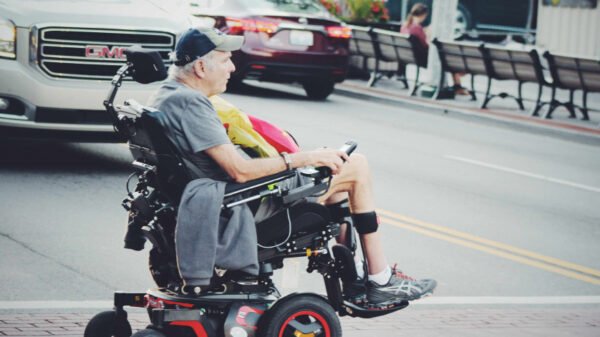Circular Economy Practices in Daily Life: Reducing Waste, Promoting Sustainability
As environmental concerns take center stage, more individuals are adopting circular economy practices in their daily lives. Unlike the traditional linear model of “take, make, waste,” the circular economy emphasizes reducing waste by repurposing, repairing, and recycling goods. By integrating these principles into everyday habits, people are helping to create a more sustainable future while also reaping economic and personal benefits.
Understanding the Circular Economy
The circular economy is a system designed to minimize waste and maximize resource efficiency. It focuses on extending the lifecycle of products through reuse, repair, recycling, and repurposing. This approach contrasts sharply with the disposable culture prevalent in modern society. By incorporating circular economy principles into daily life, individuals can reduce their environmental impact while fostering innovation and creativity.
Repurposing Items to Extend Their Life
Repurposing is one of the simplest ways to embrace the circular economy. Instead of discarding items, individuals are finding creative ways to give them a new purpose. For example, glass jars can be used for storage, old clothing can be turned into cleaning rags, and broken furniture can be transformed into unique DIY projects. Repurposing not only reduces waste but also saves money and allows for personalized, meaningful creations.
Repairing Goods to Reduce Waste
Repairing items rather than replacing them is another key aspect of circular living. From mending clothes to fixing electronics, repairing helps extend the life of products and reduces the need for new resources. Communities and businesses are supporting this practice by offering repair workshops and services. Additionally, online tutorials and repair kits make it easier for individuals to learn how to fix things themselves, fostering a culture of self-reliance and sustainability.
Supporting Secondhand Markets
The rise of secondhand markets has made it easier for people to participate in the circular economy. Thrift stores, online resale platforms, and community swap events offer access to a wide variety of pre-loved items, from clothing and furniture to electronics and tools. By choosing secondhand goods, individuals help reduce demand for new production, conserve resources, and minimize waste. Supporting these markets also fosters a sense of community and promotes ethical consumption.
Recycling for a Sustainable Future
Recycling remains a cornerstone of the circular economy, ensuring that materials like paper, plastic, glass, and metal are reprocessed into new products. However, effective recycling requires mindful participation, such as cleaning recyclables and understanding local recycling guidelines. Individuals are also exploring innovative recycling programs, such as drop-off points for electronics and textiles, to ensure that even specialized waste is managed responsibly.
Composting Organic Waste
Composting is a circular economy practice that transforms organic waste, such as food scraps and yard debris, into nutrient-rich compost for gardening. Home composting systems range from simple backyard bins to advanced indoor composters. By composting, individuals divert waste from landfills and contribute to healthier soils and ecosystems. This practice is especially impactful in urban areas, where food waste often constitutes a significant portion of landfill waste.
Choosing Durable and Sustainable Products
One of the most effective ways to embrace the circular economy is by choosing durable, high-quality products that are designed to last. Sustainable materials, modular designs, and repairable structures make products more aligned with circular principles. Many consumers are now prioritizing brands that emphasize sustainability and transparency, supporting companies that offer eco-friendly packaging, take-back programs, and repair services.
Advocating for a Sharing Economy
The sharing economy, a vital component of the circular economy, enables individuals to share resources rather than owning them outright. Platforms for carpooling, tool rentals, and clothing swaps are becoming increasingly popular, allowing people to access goods and services without the need for ownership. This approach reduces the demand for new products, saves money, and builds stronger community connections.
Educating and Inspiring Future Generations
Education plays a crucial role in embedding circular economy practices into society. By teaching children and young adults about the benefits of sustainability, individuals can inspire future generations to adopt eco-friendly habits. Schools, community organizations, and businesses are integrating circular economy concepts into their programs, emphasizing the importance of reducing waste and rethinking consumption.
The Benefits of Embracing the Circular Economy
Adopting circular economy practices in daily life offers numerous benefits, including reduced environmental impact, cost savings, and a sense of empowerment. By repurposing, repairing, and recycling, individuals contribute to resource conservation and waste reduction. These practices also encourage creativity and foster a deeper connection to the items people use, promoting a more mindful approach to consumption.
The Future of Circular Living
As awareness of the circular economy grows, its principles are becoming more accessible and practical for everyday life. Innovations in product design, recycling technologies, and sharing platforms are making it easier for individuals to participate in this sustainable system. Governments and businesses are also playing a role by promoting circular policies and investing in infrastructure that supports these practices. The future of circular living holds great promise for creating a more sustainable and resilient world.
In conclusion, circular economy practices are reshaping how people interact with goods and resources. By repurposing items, repairing goods, supporting secondhand markets, and recycling, individuals can make a meaningful impact on the environment. As these principles become a part of daily life, they pave the way for a more sustainable and connected future.


































